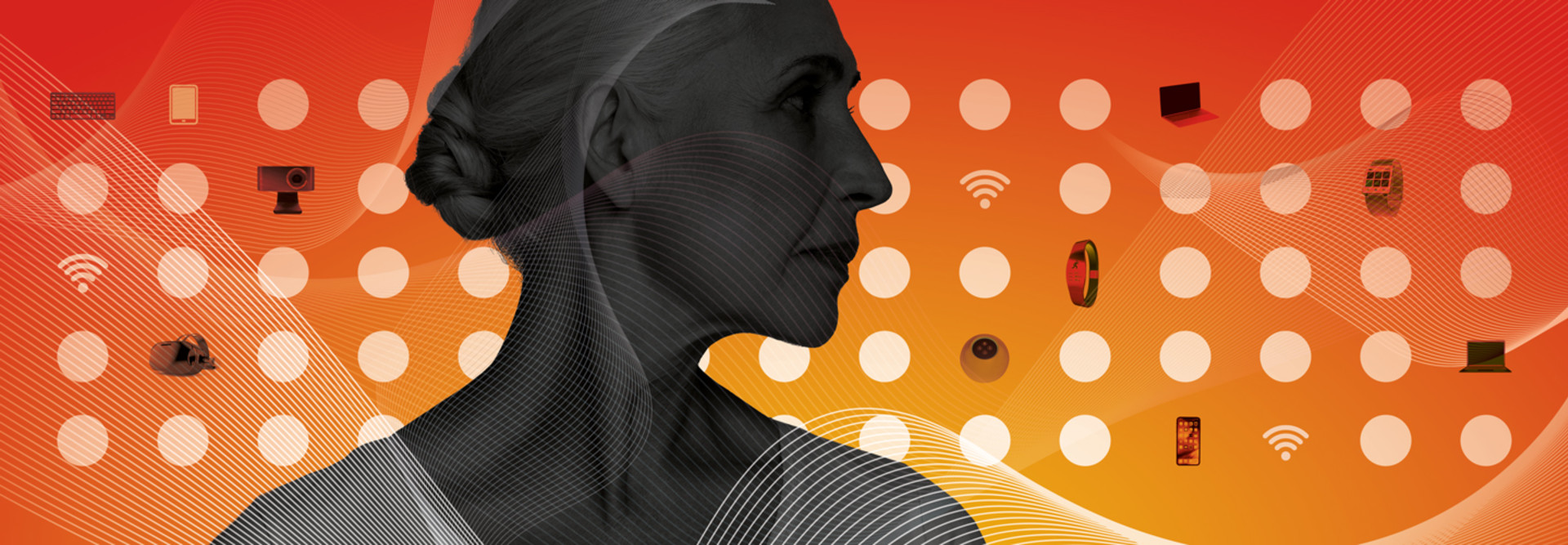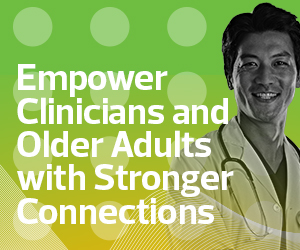As Americans grow older (the share of the population age 65 and over is expected to increase from 17 percent today to 23 percent in 2060) and develop more acute care needs (80 percent of Americans over 65 have at least one chronic condition), older adults and their families will increasingly turn to senior care to meet their long-term care needs.
As with other segments of the healthcare industry, professional caregivers, clinicians and staff rely on technology to support patient care. However, independent and assisted living organizations face an additional challenge when it comes to network and device security: Residents, family members and guests may use a wide range of consumer devices and applications — from virtual assistants and wearables to videoconferencing systems — to maintain quality of life.
Managing hardware for both personal and professional use, as well as the networks that devices connect to, can be a tall order for senior care organizations with limited IT budgets. Fortunately, a mix of technology solutions and security best practices can help facilities keep networks and devices secure.
Click the banner below to learn how senior care technology supports caregivers and older adults.
Common Security Challenges in Senior Care
Given the unique and hands-on nature of senior care, these organizations face different network and device security issues than more traditional care settings.
IT teams manage a wide range of consumer and professional devices that come with their own security settings. Devices also range dramatically in age: A resident in one room may wear the latest smartwatch and watch a smart TV, while their neighbor may be monitored by a device running Windows XP. Maintaining an inventory of devices is difficult enough; setting policies for who can use what is even harder.
Turnover poses another challenge. The attrition rate among full-time workers in senior care is 29 percent, nearly three times the attrition rate of the average hospital. This requires IT teams to closely monitor when employees leave the organization and need to have their access revoked; the longer that logins remain active after an employee has left, the greater the security risk.
Facilities also need to be mindful of outsiders who access the network. Guests are common in senior care; they visit residents, host activities or provide services ranging from cooking and cleaning to legal and financial planning. Giving these guests access to the same network that sends and receives protected health information poses a significant risk — but so, too, does offering an nonsecure guest network.
How Technology and Training Improve Network and Device Security
Fortunately, there are several options to help senior care organizations manage devices and shore up network security.
Identity management: Here, organizations have several options. Multifactor authentication will restrict access to critical applications and devices. Password management tools help prevent password sharing and provide an alternative to easily remembered passwords (or passwords written on sticky notes). Governance policies can also be set to cut off access to all corporate systems once an employee’s final shift ends.
Anti-virus software and patches: Today’s older adults are more tech savvy than ever before. Most own a smartphone, tablet or smart TV, and a significant number own wearables and virtual assistants. These devices can improve quality of life, but without the proper security, they offer an easy entry point for attackers. Asking residents to install anti-virus software and security patch updates to their personal devices — just as an IT team would require of employees — can mitigate this risk.
Network segmentation: Dividing the organization’s network into subnetworks helps restrict access. All guest traffic, for example, is separated from staff network use. Additional segmentation can limit which staff members can access proprietary personal and financial information.
Intrusion detection and network monitoring: Ongoing monitoring of network traffic helps senior care organizations identify attempts by unrecognized devices or IP addresses to access the network and block that traffic. This is valuable for adding a layer of protection that doesn’t require action on the part of technology users (whether they’re staff members, residents or guests).
Tech concierge services: As senior care residents adopt personal technology, staff may find themselves fielding more and more tech questions, from setting up smartphones to fixing Wi-Fi, starting up a Zoom call or helping with security updates. If this is the case, organizations may benefit from hiring a tech concierge to help seniors with their technology — not only as a customer service benefit but also to standardize the way that residents and guests approach device security.
Training and education: Cybersecurity training is a must in today’s workplaces. Senior care is no exception — especially for employees who may have limited experience using technology in their day-to-day roles. Educational efforts geared at residents and guests can also pay dividends. Unfortunately, older adults are prime targets for online scams, with annual losses from phishing, malware and vishing approaching $1 billion. Basic reminders about not clicking links, opening attachments or answering calls from unknown phone numbers can help keep older adults safe and protect the organization from outside threats.












